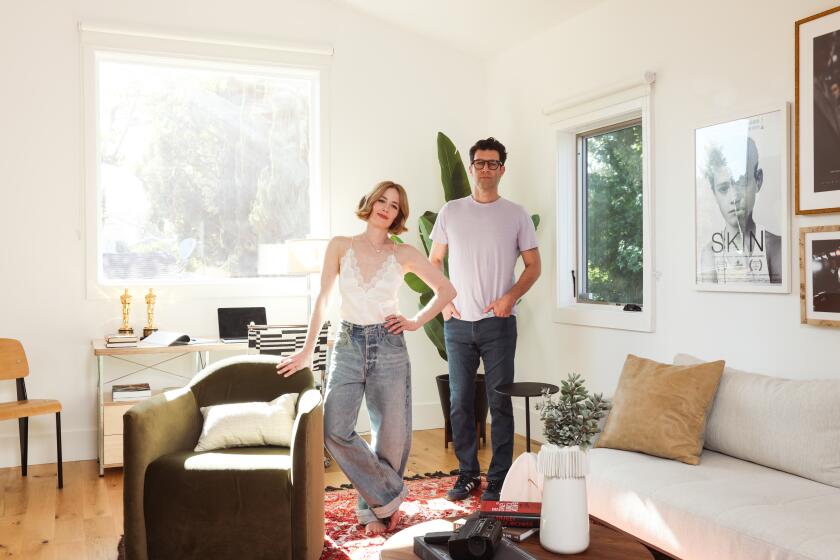$55,000 Bequest Helps Refurbish Penny Lane
Not much is known about Jack Kagen, except that the lonely nursing home resident cherished visits from youngsters who came every year to sing Christmas carols from Penny Lane, a nonprofit home in Sepulveda for emotionally handicapped children.
So much so, in fact, that when Kagen died last year, he left $55,000 to Penny Lane--enough to launch a major renovation effort that is transforming the former convalescent home from a drab building with paint-chipped walls, dark halls and low ceilings to a sunny sanctuary. Using Kagen’s unexpected gift as seed money, Penny Lane’s director raised more than $60,000 in additional funds and services for the project.
This weekend, about 11 members of Painters Union Local 1595 donated their labor to finish what Kagen started. While some of the home’s 50 teen-age girls practiced break-dancing routines in the courtyard, the painters coated the outside of the one-story stucco building a cheery yellow.
The painters ordinarily would charge about $3,000 to do the work, but instead worked for free as part of a program to aid nonprofit organizations, said Alan Lewis, president of the local. A paint company that the union owns sold Penny Lane the paint at half the retail cost, he said.
“It makes us feel good to help out,” Lewis said. “Eight years ago, we painted the interior, and when they called us this time asking for help, we said, ‘No problem.’ ”
The facility, named Penny Lane after the Beatles’ ode to hearth and home, had long needed a face lift, said Ivelise Markovits, its executive director. Teen-age girls under 18 are routed to the residential treatment center through the juvenile court system, either because they have committed crimes such as petty theft, truancy or prostitution or because they have been abused, she said. The average stay is about 10 months.
“We want to brighten the lives of the girls, but Penny Lane was dark and oppressive-looking until Kagen’s gift got things going,” said Markovits, a former probation officer who founded the home in 1970.
Markovits said she has been unable to learn anything about Kagen, other than that he lived in a nearby nursing home and enjoyed the girls’ Christmas caroling.
Shortly after Kagen died, Markovits met Los Angeles architect Luis Colasunno, who then donated much of his time to the project, she said. Colasunno added curved walls, skylights, cathedral ceilings, a fireplace and cozy alcoves to give Penny Lane the ambience of a safe, peaceful haven far from the run-down neighborhood surrounding it, Markovits said. In addition, the teen-agers’ rooms are being painted bright colors such as lavender and peach.
“It’s a lot easier to keep them clean now that they’re so pretty,” said one teen-ager who has lived at Penny Lane for more than a year.
More to Read
Sign up for Essential California
The most important California stories and recommendations in your inbox every morning.
You may occasionally receive promotional content from the Los Angeles Times.










